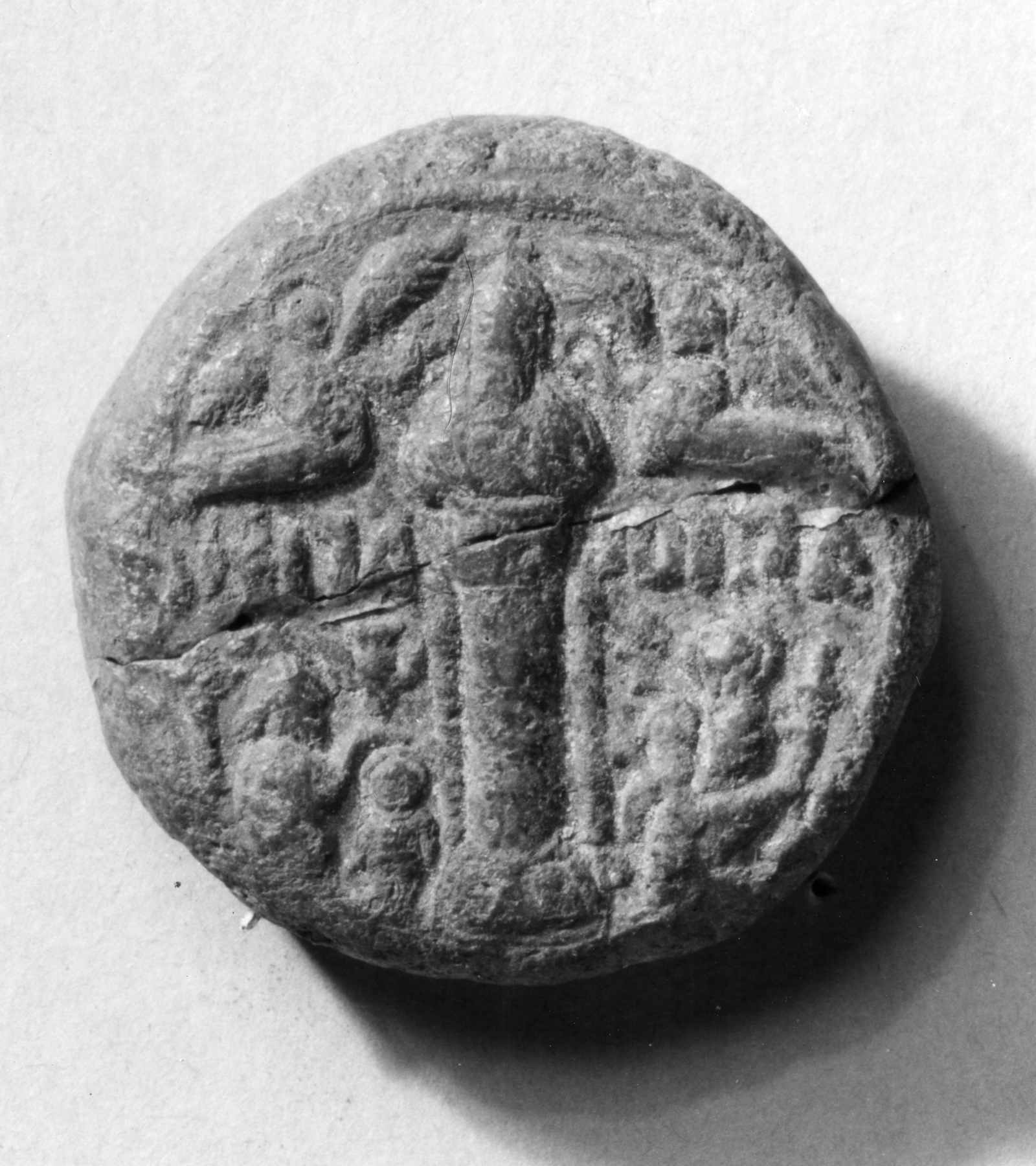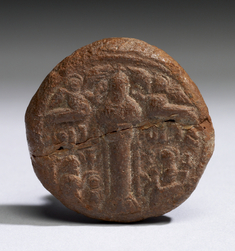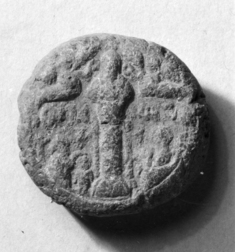Pilgrim Token from the Shrine of St. Symeon
(Byzantium and Early Russia)
This token is from the shrine of Symeon the Elder, one of the early stylite saints (stylos is Greek for “column”) who for decades stood or sat in prayer atop columns in the Syrian desert. The token depicts Symeon’s column, topped by his bust-length image; two angels approach with a crown. Inscribed at the sides, in Greek, is “Holy, Holy.”
The columns of St. Symeon the Elder (d. 459) and his imitator, St. Symeon the Younger (d. 592), were famous pilgrim attractions during their lifetimes and for centuries after. The saints were known for their miraculous cures, performed with tokens made from earth near the base of their columns.
Provenance
Provenance (from the French provenir, 'to come from/forth') is the chronology of the ownership, custody, or location of a historical object. Learn more about provenance at the Walters.
Walters Art Museum, 1946, by purchase.
Exhibitions
| 2002-2005 | Realms of Faith: Medieval and Byzantine Art from the Walters Art Museum. Frist Center for the Visual Arts, Nashville. |
| 2001-2002 | Realms of Faith: Medieval and Byzantine Art from the Walters Art Museum. Frist Center for the Visual Arts, Nashville. |
| 1982 | Sacred Souvenirs: Byzantine Pilgrimage Art. Dumbarton Oaks, Washington. |
Geographies
Syria (Qalat Seman) (Place of Origin)
Measurements
Diam: 1 3/8 in. (3.5 cm)
Credit Line
Museum purchase, 1946
Location in Museum
Not on view
Accession Number
In libraries, galleries, museums, and archives, an accession number is a unique identifier assigned to each object in the collection.
In libraries, galleries, museums, and archives, an accession number is a unique identifier assigned to each object in the collection.
48.1938




